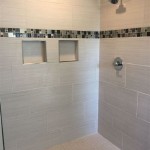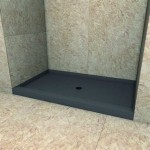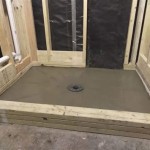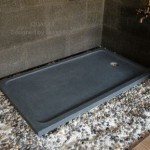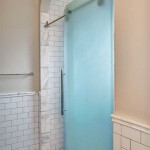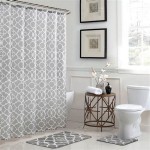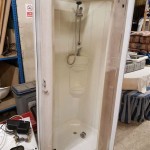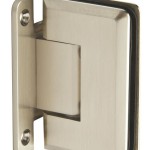Can You Use Backer Board for Shower Floor?
Welcome to our comprehensive guide on understanding the suitability of backer board as a flooring material for your shower. We will explore the different types of backer boards available, their pros and cons, and provide step-by-step instructions on how to install a backer board on your shower floor. So, let's dive right in! ###
Different Types of Backer Boards
There are two primary types of backer boards commonly used in shower floor installations: -Cement Backer Boards:
These boards are made of a mixture of cement, sand, and fibers. They are solid and stable, providing a durable base for tile installation. Cement backer boards are water-resistant, making them ideal for shower floor applications. -Fiberglass Backer Boards:
Made from fiberglass, these boards are lightweight and flexible. They are also water-resistant and offer good support for tile installation. Fiberglass backer boards are easier to cut and handle compared to cement backer boards. ###Pros of Using Backer Board for Shower Floor
-Water Resistance:
Backer boards are typically water-resistant, making them suitable for use in wet areas like shower floors. They can help prevent water damage to the subfloor and underlying structure. -Sturdiness and Stability:
Backer boards provide a solid and stable base for tile installation. They can help distribute weight evenly and prevent tiles from cracking or shifting. -Ease of Installation:
Installing backer boards is relatively easy, even for DIY enthusiasts. With proper tools and techniques, you can install backer boards on your shower floor without much hassle. -Flexibility:
Fiberglass backer boards offer flexibility, making them suitable for use on curved or uneven surfaces. They can be easily cut and shaped to fit irregular spaces. ###Cons of Using Backer Board for Shower Floor
-Weight:
Cement backer boards are heavier compared to other flooring materials like plywood or OSB. This can make handling and installation more challenging, especially for large shower floors. -Cost:
Backer boards can be more expensive than other flooring materials, making them a less cost-effective option for some projects. -Susceptibility to Damages:
Backer boards can be damaged by improper handling or installation. They can also be damaged by prolonged exposure to moisture if not properly sealed. ###Step-by-Step Guide to Installing Backer Boards on Shower Floor
1.Prepare the Subfloor:
Make sure the subfloor is level, dry, and free of debris. If needed, level the subfloor using self-leveling compounds or by installing a layer of plywood. 2.Measure and Cut the Backer Boards:
Measure the dimensions of your shower floor and cut the backer boards accordingly. You can use a utility knife or a circular saw to make precise cuts. 3.Apply Mortar:
Spread a thin layer of mortar onto the subfloor, ensuring that the entire surface is covered. Use a notched trowel to create grooves for better adhesion. 4.Install the Backer Boards:
Press the backer boards firmly onto the mortar, aligning them properly. Make sure there are no gaps or overlaps between the boards. 5.Secure the Backer Boards:
Use screws or nails to secure the backer boards to the subfloor. Make sure to use galvanized or stainless steel fasteners to prevent rust. 6.Apply Waterproofing Membrane:
Apply a waterproofing membrane over the backer board using a paint roller or brush. This will help prevent water from seeping through the joints and damaging the subfloor. 7.Let it Dry:
Allow the waterproofing membrane to dry completely according to the manufacturer's instructions. 8.Install Tiles:
Once the waterproofing membrane is dry, you can proceed with installing the tiles on the backer board using a suitable adhesive. Follow the manufacturer's recommendations for proper installation. ###Conclusion
Backer boards can be an effective flooring material for shower floors, offering water resistance, sturdiness, and ease of installation. However, consider their weight, cost, and potential for damage before making a decision. With proper preparation, installation techniques, and waterproofing measures, you can successfully use backer boards on your shower floor for a long-lasting and functional bathroom space. If you have any doubts or require professional assistance, consult with an experienced tile installer for guidance.
Proper Way To Set Wallboard For Shower

How To Diy A Shower Pan The Space Between

How To Build A Tile Shower Pan Icreatables Com

Embed Bottom Edge Of Cement Board Into The Top Mortar Layer Shower Bed Leave Gap At Least 1 2 Betw Building A Pan Concrete

How To Install Cement Board For Tile Bower Power

How To Install Cement Board On A Floor Diy Family Handyman

Here S How Install A New Shower Stall With Tile Floor

Xps Tile Backer Board Shower Tray Base Niche

How To Build A Shower Pan
How To Install Shower Backerboard Hardieboard Cement Proper Installation Diy
Related Posts

